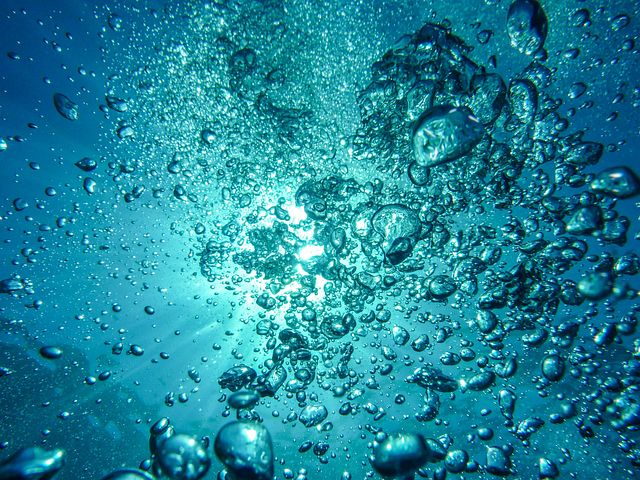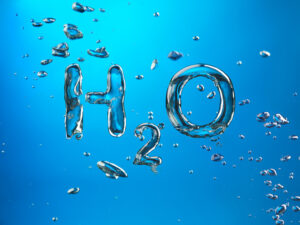OXYGEN WATER 101
OXYGEN WATER 101
OXYGEN WATER 101

OXYGEN WATER 101… Understanding Oxygen content and benefits of hyper oxygenation
Living organisms need oxygen to survive. We breathe oxygen and for species that live in water, they survive on dissolved oxygen. Oxygen, while abundant, may not be saturated quite like you think. Oxygen content in air and water will vary based on many factors.
A fact that surprises most people is that air generally consists of approximately 21% oxygen and DO (dissolved oxygen) content in water is less than 1%. Reference: Ground Water Governance
How much dissolved oxygen can be found in a water supply will depend on several factors:
Aeration of water – Under pressure, relatively large quantities of oxygen are dissolved in water. When the pressure is reduced, a proportionate weight of the gas escapes (Henry’s Law*).
Mineral content of water – The amount of minerals in water affects its ability to dissolve oxygen. Distilled water can absorb more oxygen than well waters with higher mineral content. Obviously, seawater, for this same reason, holds less dissolved oxygen than freshwater.
Excess nutrients lead to a common problem known as an “algal bloom.” This causes an overproduction of algae, which limits sunlight reaching lower waters, and reduces dissolved oxygen. Plants cannot live without sunlight, and as a consequence, they will die. The reduction of dissolved oxygen occurs as plants die and decay at the bottom of the water.
Altitude/Pressure: Altitude: Water holds less oxygen at higher altitudes.
Well waters usually contain smaller amounts of dissolved oxygen than surface supplies. In deep wells, there may be a total absence of gas. However, an article in Science Magazine, June 11, 1982, pages 1227-30, states:
Contrary to the prevailing notion that oxygen-depleting reactions in the soil zone and in the aquifer rapidly reduce the dissolved oxygen content of recharge water to detection limits, 2 to 8 milligrams per liter of dissolved oxygen is present in water from a variety of deep (100 to 1000 meters) aquifers in Nevada, Arizona, and the hot springs of the folded Appalachians and Arkansas. Most of the waters sampled are several thousand to more than 10,000 years old, and some are 80 kilometers from their point of recharge.
*Henry’s Law. The English chemist, William Henry, formulated a law regarding the effect of pressure on a gas. The law states: The weight of a gas that dissolves in any given liquid is directly proportional to the pressure, providing the temperature remains constant. If one gram of oxygen, for example, dissolves in 100 cubic centimeters of water at atmospheric pressure, two grams of oxygen will dissolve under twice the normal atmospheric pressure, providing there has been no change in temperature
How do humans interfere with the amount of dissolved oxygen?
Human intervention comes in the form of dams, human waste, fertilizer, and agricultural waste.
Dams slow the flow of water which reduces the amount of aeration and increases the temperature.
Human waste carries a large amount of oxygen consuming bacteria. Raw sewage can spill into the waterway and introduce bacteria into the water that will use up large amounts of dissolved oxygen.
Fertilizers create algae blooms and plants cannot live without sunlight. The reduction of plants causes less dissolved oxygen.
Additionally, there are a number of chemicals used in industry and water processing which can remove oxygen from a water supply. Chlorine, Chloramine, Fluoride, Sodium sulfite, and other chemicals are widely used in water treatment. These chemicals can react with oxygen and reduce soluble oxygen.

Can I add Oxygen to my water and is there a benefit?
There are several reasons adding oxygen to your water is a good thing!
Oxygen saturation in water will range from ~5mg/liter up to ~14mg/liter depending on factors like chemicals, altitude, & minerals in the water. The general saturation of oxygen in water is between 5-7mg/liter.
Using a tool to aid in the addition of oxygen can help to increase the level of oxygen in the water.
Benefits include:
- Oxygenating Water can increase the saturated oxygen from 5-7mg/liter to 10-14 mg/liter.
- Quicker recovery during/after exercise: Our bodies burn calories and oxygen when we exert ourselves. High oxygen levels in water can deliver oxygen to the body and blood much faster.
- Supports good hydration: Drinking water daily is important for good hydration. Higher levels of oxygen can help the body support good hydration.
- May speed up alcohol metabolism: Alcohol is absorbed by the small intestine and the stomach, before being metabolized by the liver. The metabolization of alcohol can’t occur without oxygen. High Oxygen levels can aid to metabolize alcohol faster.
- Higher levels of oxygen in the water gives the body a higher dose of oxygen and can aid in recovery from injury/surgery when the body needs it most.
- Oxygen adds to the taste of water. For this reason, adding oxygen can help improve the taste of water. Water, at times, can have a “flat” taste which often occurs after it has been standing in an open container for some time. Reintroducing oxygen into the water will give it a more appealing taste.
Several authors have reported the benefits of using oxygenated water, in the case of human health, drinking water that contained higher oxygen leads to improve oxygen availability of the body and the consumer’s health, which may improve the healing process for diabetic patients and could increase vitality and improve immune functions.
A reference study in the Journal of Complementary Medicine published in 2017 discusses the benefits that functional water increases the physical performance of the human body as reported by Szalkai. ARTICLE
.
